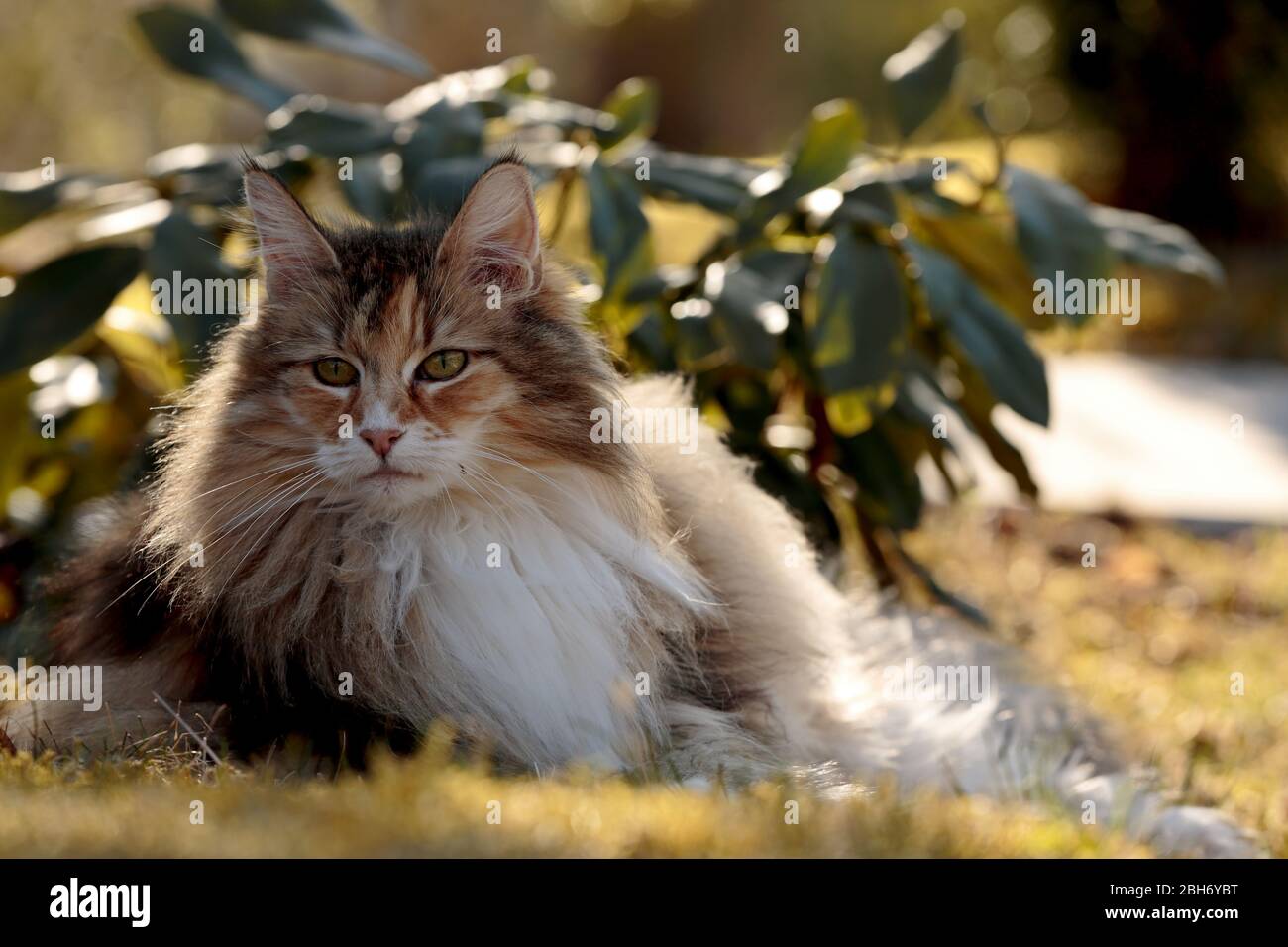
A beautiful tortoiseshell norwegian forest cat lying in garden in the evening light Stock Photo
Calico and Tortoiseshell Patterns. Norwegian Forest Cats may also be found in calico or tortoiseshell patterns. These patterns consist of a mix of white, black, and red or orange. The colors may be distributed in patches, or they may be blended together in swirls. Smoke Pattern. The smoke pattern is another pattern found in Norwegian Forest Cats.

Norwegian Forest Cat Kittens from traditional old lines keeping the breed true to type A
The Tortoiseshell Norwegian Forest cat is a unique and beautiful cat with long, luxurious fur. The history of the Norwegian Forest cat is long and fascinating, although the breed was not officially recognized for centuries. Although the Norwegian Forest cat is uncommon in the United States, it is still popular at shows and around the world.
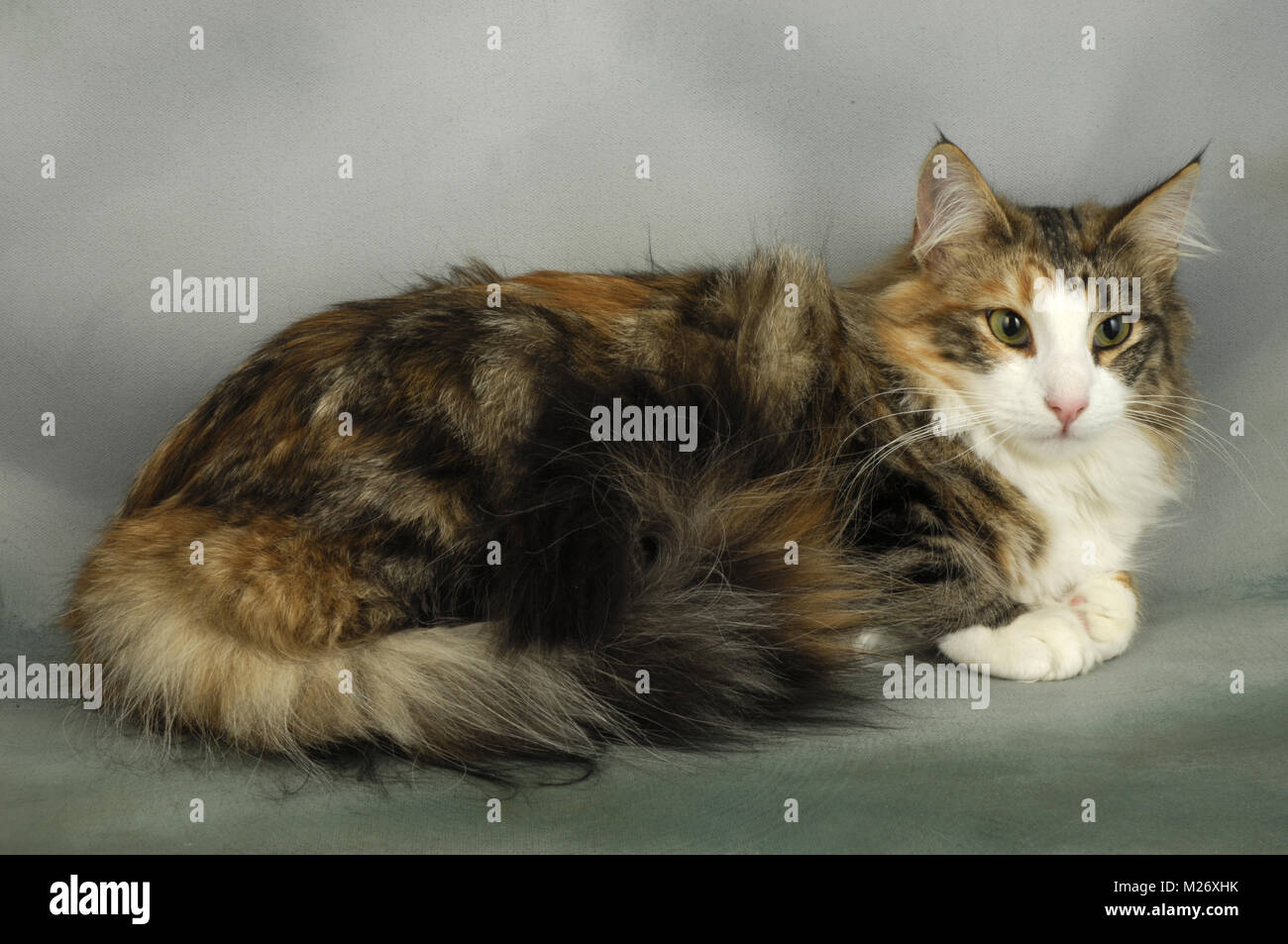
brown tortie and white norwegian forest cat Stock Photo Alamy
An adult male Norwegian Forest Cat typically weighs between 12 and 16 pounds (5.4 to 7.3 kg), though they can weigh more; adult females tend to be slightly smaller, at about 9 to 12 pounds (4.1 to 5.4 kg). Females bear four to six kittens per litter, and the young are slow to mature, taking four to five years to reach full adult size.

Tortoiseshell Norwegian Forest Cat Facts, Origin & History (With Pictures) Excited Cats
The Norwegian forest cat is a graceful breed of feline with relatively long fur, similar in length to that of the Maine Coon. These Norwegian natives appear in a wide array of different colors and patterns, basically anything from jet black and snow white to tabby and tortoiseshell, the latter of which is a type of cat coat coloration that exists almost exclusively in the fairer gender -- females.
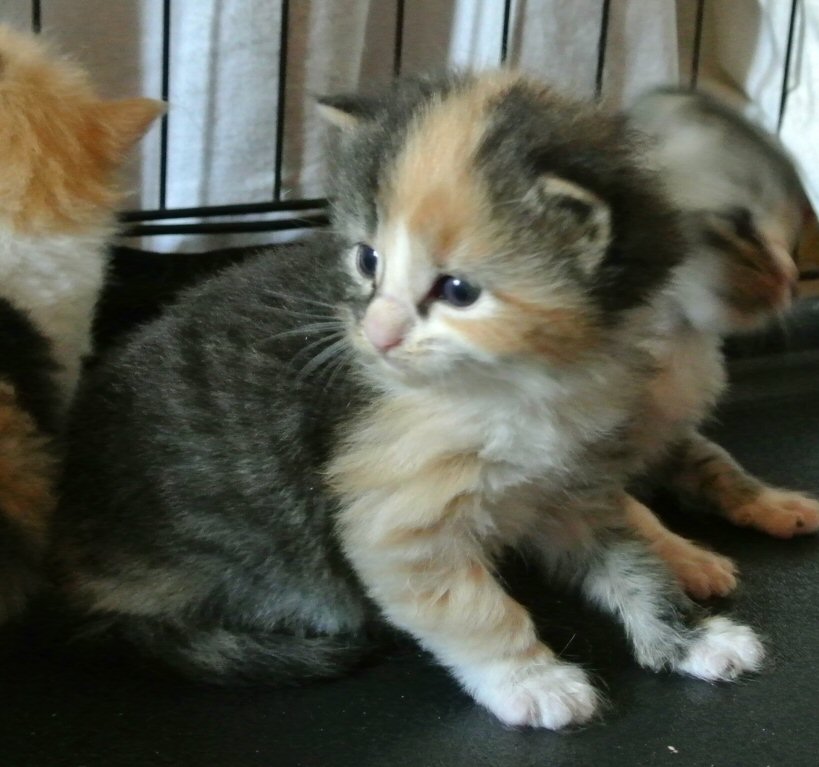
Bushkenheim Norwegian Forest Cats Australia
The Norwegian Forest cat (Norwegian: Norsk skogskatt and Norsk skaukatt) is a breed of domestic cat originating in Northern Europe. This natural breed is adapted to a very cold climate, with a top coat of long, glossy hair and a woolly undercoat for insulation. The breed's ancestors may have been a landrace of short-haired cats brought to Norway about A.D. 1000 by the Vikings, who may also.
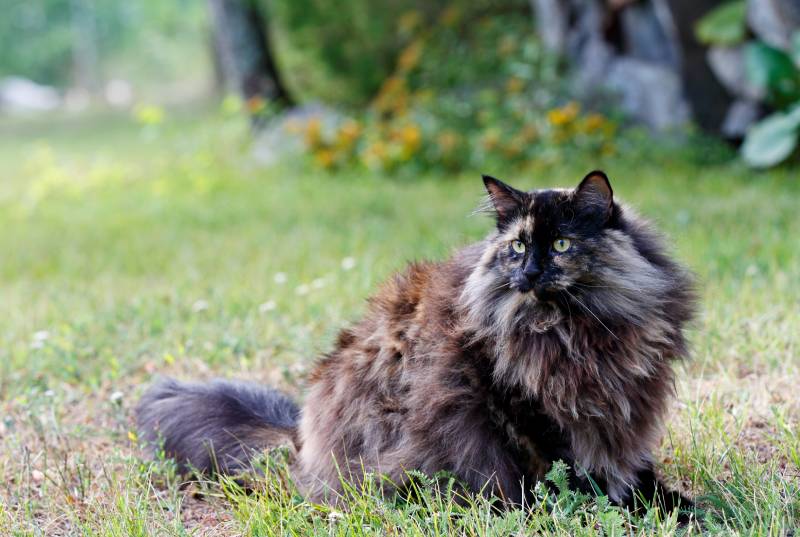
Tortoiseshell Norwegian Forest Cat Facts, Origin & History (With Pictures) Hepper
An amber tortoiseshell Norwegian Forest Cat has an amber body with patches of red, of which there can be more than one shade. Amber tortoiseshell kittens appear black, red, or dark brown, with the.
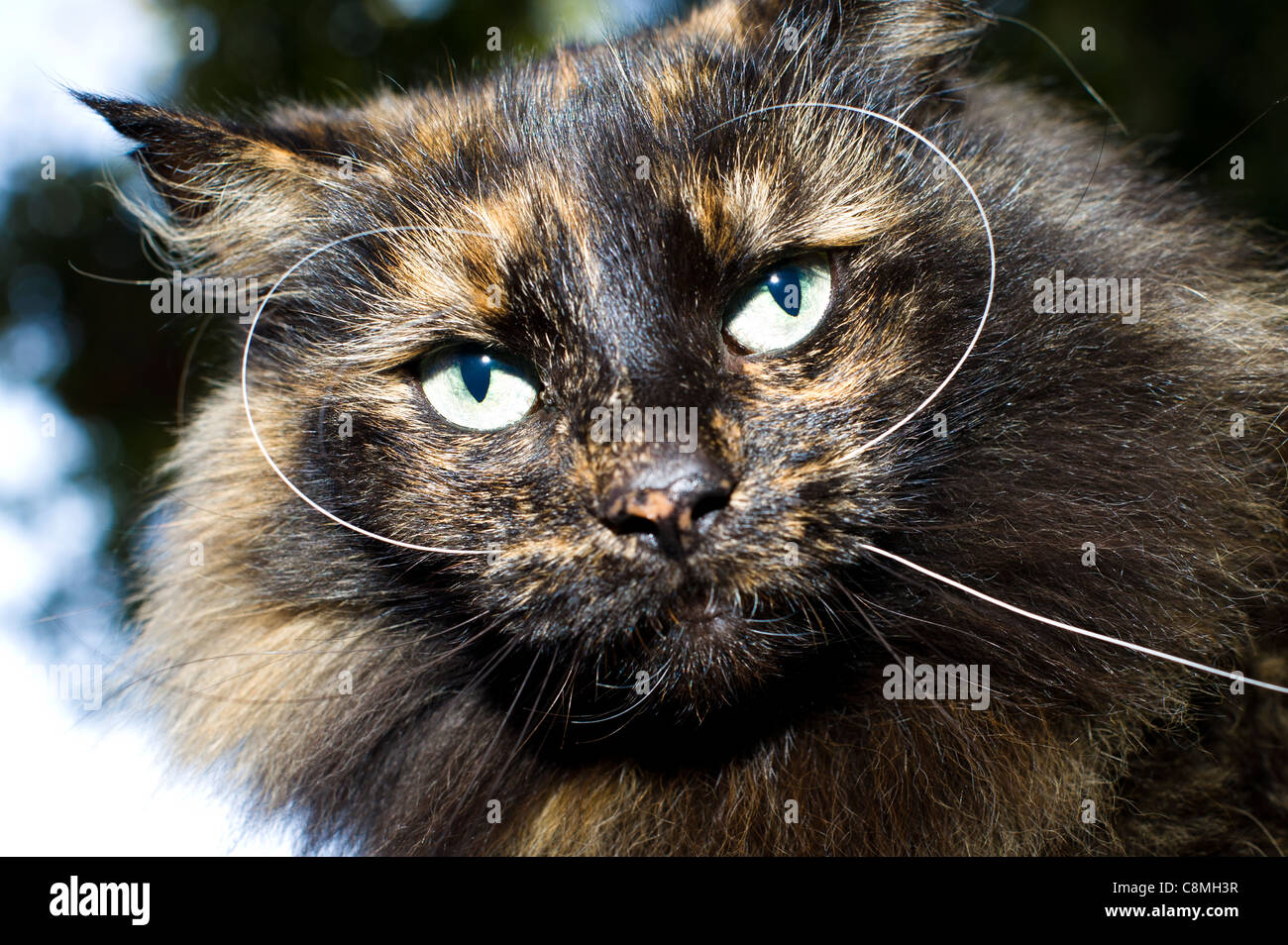
Black Tortoiseshell Norwegian Forest Cat portrait in outdoor setting Stock Photo Alamy
Norwegian forest cats are slow to mature, achieving full growth around 5 years of age. They are lively and playful well into adulthood, but they are not obsessively active. Norwegian forest cats appreciate fun toys and are usually up for a play session—on their terms. Consider providing a cat tree or tower for climbing, perching, and.

A strict looking tortoiseshell norwegian forest cat staring at the photographer Stock Photo Alamy
Striking looks and a warm personality help the Norwegian Forest Cat stand out from the crowd. This exquisite long-haired cat breed is an ancient one, with ample intelligence, fantastic social skills, and an appreciation for all of life's comforts. Even though the Norwegian Forest Cat comes from a cold climate, these cats love to keep warm.
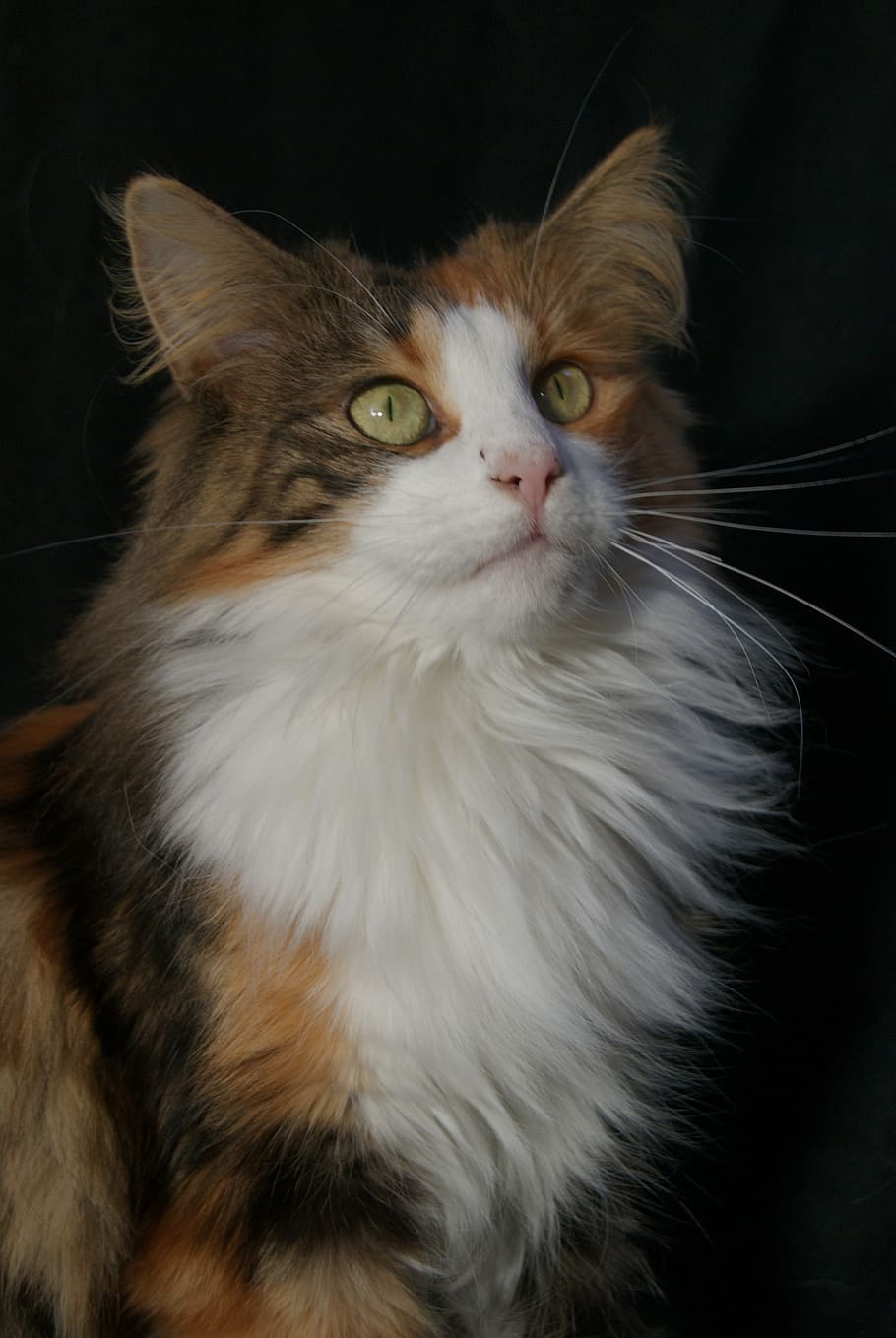
HD wallpaper norwegian forest cat, tortoiseshell cat, lapjeskat, pets, animal Wallpaper Flare
Key Personality Traits: Affectionate. Calm. Intelligent. From the land of mountains, fjords, and cold winters comes the Norwegian Forest Cat, a cat breed that once sailed with the Vikings. Despite their large size, wild appearance, and strong hunting instinct, these cats are incredibly affectionate and calm. Though they have the same needs as.

Tortoiseshell Norwegian Forest Cat fluffymainecoonny
Tortoiseshell: A combination of black, red, and cream patches on a white background;. Norwegian Forest Cats are a popular breed with a rich history, and researchers are continually exploring various aspects of their biology, behavior, and genetics. Ongoing studies are aimed at understanding the breed's characteristics, identifying.

Tortoiseshell Norwegian forest cat standing outdoors in the evening light Stock Photo Alamy
The Earliest Records of Tortoiseshell Norwegian Forest Cats in History. The Norwegian Forest Cat is an ancient breed dating back to 1000 AD. Its ancestors may be black and white British shorthair.

"Norwegian Forest cat tortoiseshell" by Penel Redbubble
Tabby Norwegian Forest cats are the most common out of the bunch. A classic tabby cat comes with dense, defined markings on the body and an "M" shape on the forehead. And, tabby cats typically rock a few swirls on the cheeks and a black line down the back. Tabby Norwegian Forest cats can be mackerel, patched, spotted, or ticked.
A Beautiful Norwegian Forest Cat Tortoiseshell Femalein Snow, Stock Photo Crushpixel
From silver chinchilla to black, red smoke, orange, tortoiseshell, van bi-color, and more, you'll have so many choices!. Norwegian Forest Cats are a great choice for a multi-pet household.

Fluffy long haired tortoiseshell colored Norwegian forest cat lying in repose on bed Stock Photo
The tortoiseshell Norwegian Forest Cat is a stunning breed with a rich history and unique origins. With its beautiful combination of black, brown, red,

Pin on Cats
Tortoiseshell Norwegian Forest cats are beautiful creatures affectionately called "torties.". Torties are named after tortoises because they're embellished with a unique, multicolored fur that resembles the shell of a tortoise. Deemed "the divas of the cat world," torties are sought-after for a reason.

A Beautiful Portrait of a Tortoiseshell Norwegian Forest Cat Female Stock Image Image of breed
GENERAL: the Norwegian Forest Cat is a sturdy cat with a distin-guishing double coat and easily recognizable body shape. It is a. tipped hairs as in the pattern of the tortoiseshell. Cat in repose appears tortoiseshell. In motion the white undercoat is clearly apparent. Points and mask (i.e., face, ears, paws, tip of tail) tor-